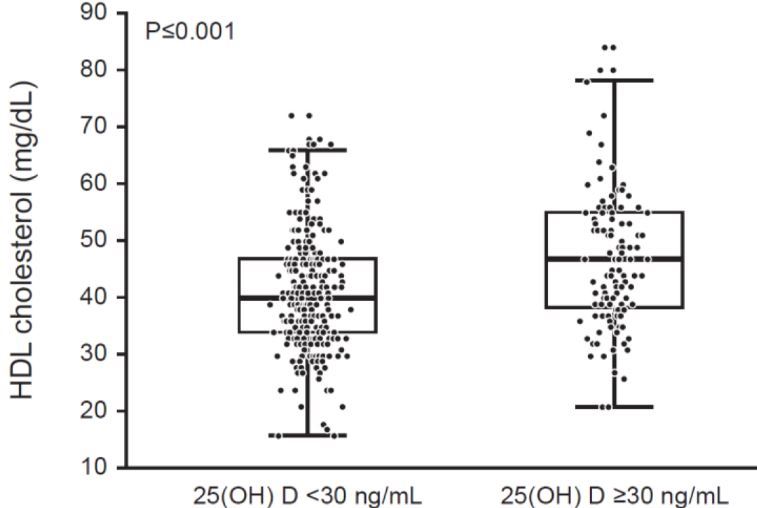Vitamin D levels are (again) associated with HDL cholesterol levels
Exploring the association between serum 25-hydroxyvitamin D and serum lipids—more than confounding?
European Journal of Clinical Nutrition (2018), doi:10.1038/s41430-018-0088-z
Rolf Jorde & Guri Grimnes
Tromsø Endocrine Research Group, Dept. of Clinical Medicine, UiT The Arctic U. of Norway, Tromsø, Norway
Division of Internal Medicine, University Hospital of North Norway, Tromsø, Norway
 --- 1. Image from the web
--- 1. Image from the web
Background/objectives
In observational, but not interventional, studies there are strong associations between serum 25-hydroxyvitamin D (25(OH)D) and serum lipids. The purpose of the present study was to examine potential causes of this association.
Subjects/methods
A total of 17,411 subjects participating in the seventh survey of the Tromsø Study were included in the cross-sectional study; 5384 subjects who participated in both the sixth and seventh survey were included in the longitudinal study; 2365 subjects who participated in both the fourth and seventh survey were included in the genetic study; and 479 subjects with impaired glucose tolerance were included in the vitamin D binding protein (DBP) analyses.
Results
For serum 25(OH)D, there were strong and positive associations with LDL-, HDL-, and total-cholesterol, and a negative association with triglycerides that remained after adjustment for gender, age, BMI, diet, supplements, and lifestyle factors. These associations were seen in winter as well as summer. Except for serum cholesterol, change of season for blood sampling did not affect lipid levels. However, when analyzing separately, subjects with low or no intake of vitamin D supplements, fish oil and fat fish, only the association between 25(OH)D and HDL-cholesterol remained significant. Serum DBP or single-nucleotide polymorphisms related to 25(OH)D had no relation to lipid levels.
Conclusions
The associations between 25(OH)D and lipids (except for HDL-cholesterol) can be explained by known confounding factors. However, for HDL-cholesterol, the cause of the association with 25(OH)D still remains unknown.
